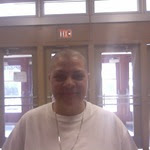Third Week in and I'm Already Behind
I meant to sit down Sunday and write, but well you know life happens.
So the new curriculum is really going well. We had our first common summative assessment last week. Most students did fairly well.
I know most 7th grade math curriculum starts with ratios and use that as a theme, because it leads nicely into expressions and equations which are the starting point for 8th grade. Then a lot of intervention focused curriculum usually start with number sense and then on to ratios. I wanted to start with area.
First of all most of the time students are short changed with area and statistics because they come at the end of the year and are most often left out because the teacher runs out of time.
More importantly I know from experience that I have a lot of students, sometimes up to 50%, who struggle with basic math facts. I wanted my students to spend a lot of time practicing those math facts to start the year.
There are also a ton of ancillary skills that come with multiplication with the area model.
For example. Decomposing composite shapes leads naturally into decomposition numbers. Which leads naturally into the distributive property. Which is a great way to work with multiplying fractions especially for those students who can never remember all the complicated rules.
In just five weeks we have touched on a ton of topics I rarely get to in the entire year. We had a great discussion of rational and irrational numbers. Usually I introduce this with circles and I did this time too, but we flowed into circles by relating them to rectangles. At the time the mantra was everything is related to rectangles. So when we watched the usual video on how a circle is cut into infinite pizza slices and fits together as a rectangle it was easy to see that hey maybe each of those slices still has a bit of a curve so maybe that is why pi is a never ending never repeating decimal. Boom irrational numbers explained in a way everyone understands.
Later while decomposing rectangles with mixed numbers into a whole number and a fraction and we stumbled on 1/3. We saw that this decimal ended up being a repeating decimal. And that sometimes it is actually easier to use fractions instead of decimals even though they don't have fractions on the calculator. (Surprise they do, but I haven't shown that trick yet). Usually students don't care about these funny decimals, but maybe this time they did.
Anyway there is a lot of stuff that just seems to flow so much easier with area. I'm glad we started with this focus. I'm excited tomorrow we get to introduce our first variable. Well see if it is as exciting for students.
So the new curriculum is really going well. We had our first common summative assessment last week. Most students did fairly well.
I know most 7th grade math curriculum starts with ratios and use that as a theme, because it leads nicely into expressions and equations which are the starting point for 8th grade. Then a lot of intervention focused curriculum usually start with number sense and then on to ratios. I wanted to start with area.
First of all most of the time students are short changed with area and statistics because they come at the end of the year and are most often left out because the teacher runs out of time.
More importantly I know from experience that I have a lot of students, sometimes up to 50%, who struggle with basic math facts. I wanted my students to spend a lot of time practicing those math facts to start the year.
There are also a ton of ancillary skills that come with multiplication with the area model.
For example. Decomposing composite shapes leads naturally into decomposition numbers. Which leads naturally into the distributive property. Which is a great way to work with multiplying fractions especially for those students who can never remember all the complicated rules.
In just five weeks we have touched on a ton of topics I rarely get to in the entire year. We had a great discussion of rational and irrational numbers. Usually I introduce this with circles and I did this time too, but we flowed into circles by relating them to rectangles. At the time the mantra was everything is related to rectangles. So when we watched the usual video on how a circle is cut into infinite pizza slices and fits together as a rectangle it was easy to see that hey maybe each of those slices still has a bit of a curve so maybe that is why pi is a never ending never repeating decimal. Boom irrational numbers explained in a way everyone understands.
Later while decomposing rectangles with mixed numbers into a whole number and a fraction and we stumbled on 1/3. We saw that this decimal ended up being a repeating decimal. And that sometimes it is actually easier to use fractions instead of decimals even though they don't have fractions on the calculator. (Surprise they do, but I haven't shown that trick yet). Usually students don't care about these funny decimals, but maybe this time they did.
Anyway there is a lot of stuff that just seems to flow so much easier with area. I'm glad we started with this focus. I'm excited tomorrow we get to introduce our first variable. Well see if it is as exciting for students.
 |
| Image from study.com |

Comments